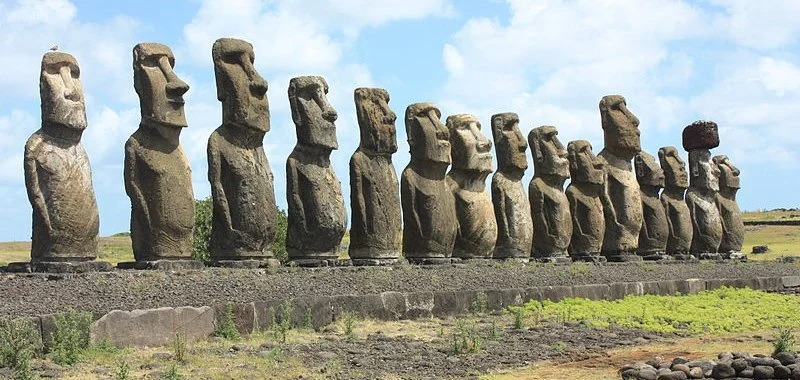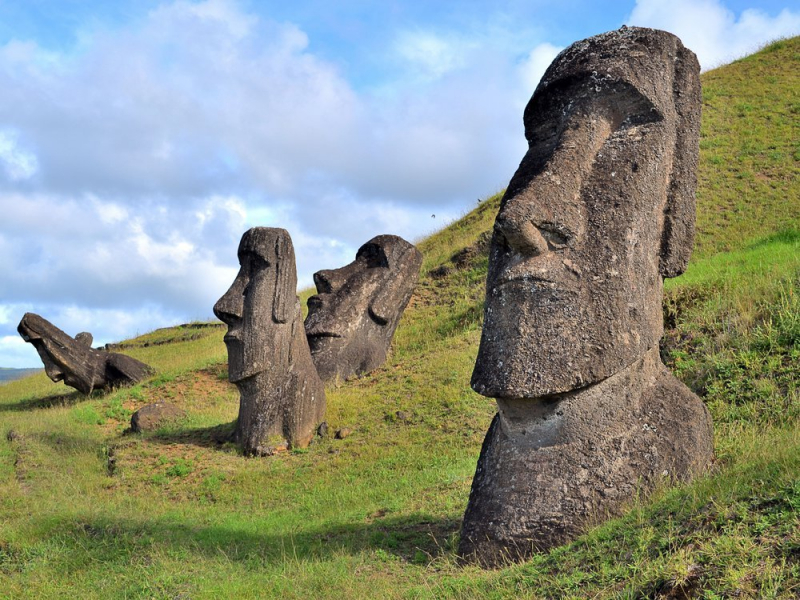Easter Island
Famous for the giant rock heads along the coast, Easter Island (Rapa Nui) is the place where Polynesia civilization thrives, first settled on the island around 700 CN. Its residents are skilled in sea navigation and other advanced capabilities. Some speculate that natural resources are decreasing, which can lead to the decline of civilization. Diseases and other factors may also play a certain role. This is a mysteriously lost civilization that once existed.
On the canoe, Polynesia somehow found and settled on Easter Island, one of the most remote places in the world, located about 2,300 miles from Chile to the west. Even more noticeable, despite the lack of wheels or no animal packaging - much more cranes - they still built hundreds of giant stone statues, called moai, the largest statue of 32 feet and heavy at 82 tons. However, by the 1800s, every statue was overthrown, the population collapsed and the chiefs and priests of the island were overthrown. By analyzing pieces of coal and pollen in the core of sediment, scientists discovered that the resurrected islanders have cut most of the last trees and mice to eat the seeds of the tree before the forest may be possible. This ecological disaster has eliminated the ability to build ropes or canoes on the beach and reduce the population of burning grass to make fuel, which may have opened up a period of mass and civil war. The appearance of Europeans only increased the decline, starting in 1722 when the first Europeans arrived at Easter and immediately shot some people on the island. In the 1870s, a number of seasonal passive diseases, along with major slavery in Peru, reduced the number of indigenous people to about 100 people.
- Time: 700 - 1200 AD
- Location: Easter Island












